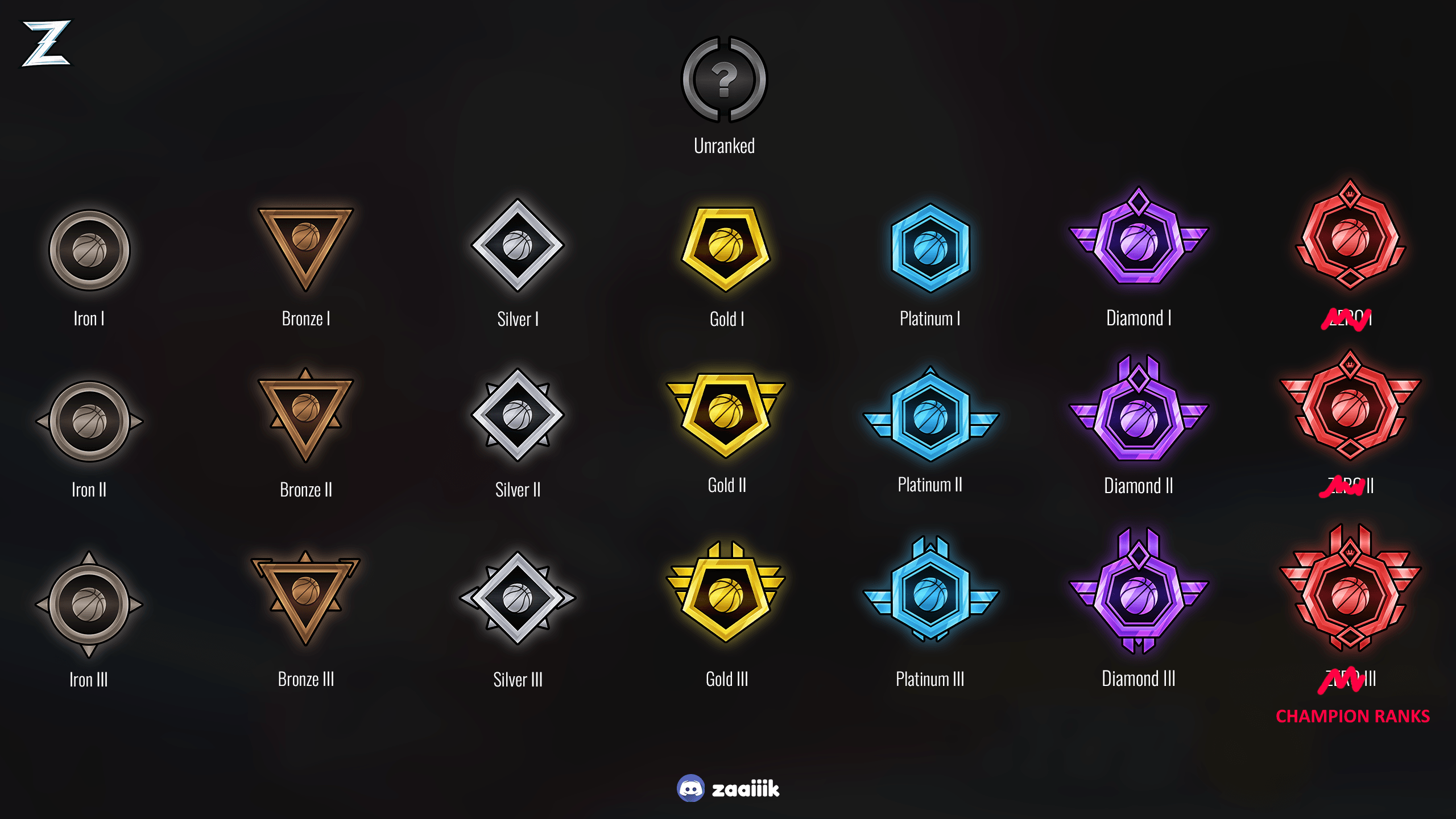Just before we get into this post, a quick word of warning: this is a slightly technical post on how the RR/MMR system works in Basketball: Zero’s ranked system. There aren’t any specifics given to prevent cheating the system as well.
Basketball: Zero uses two rating systems: MMR and RR. This parallels Valorant’s rating systems, and Valorant actually inspired our system. The general concept is the MMR value is the true skill level and is hidden from the player, whilst RR is an abstraction over it (so it “should” represent your skill level, but doesn’t tell you exactly).
The main justification for this is that it provides a clear and easy way of seeing when you rank up using a fixed amount of rating points per rank, but will always match you with players that are around your actual skill. The system then tries to perform what is called “convergence” to make these numbers match as close as it can, so your RR becomes indicative of your MMR. When they match, you should earn and lose around the same amount of RR per match. Of course, because it can never exactly match (since there’s minimum gain/loss), it will always be slightly off.
MMR (Matchmaking Rating)
MMR is based on a modified version of the OpenSkill rating system, which itself is derived from Microsoft’s TrueSkill. The general premise is that instead of a fixed number that determines your rating, it has a general skill rating (), and a “confidence” level (). As you play more games and your skill rating becomes more refined, the system becomes more confident in that skill level and is willing to give a more accurate ordinal value, which if shown would traditionally be associated with ELO. The main benefit for this is that the system learns what you should actually be, and tries to find you good teammates based on this.
Gaining/Losing MMR
MMR is currently gained and lost based on whether or not you win the match, and your individual performance in the game overall. If you win the match and are the MVP of your team, you will gain the most rating whilst your teammates will gain a bit less. It works the same way if you lose - if you are the MVP of your team, you will lose the least MMR of your team.
In short, if you focus primarily on support during your matches, you will end up not gaining as much rating as the game can’t determine as easily how good you are when you’re playing alone. Whilst teamwork is essential to winning games, everyone needs to be able to pull their own weight and not just feed into one person on their team.
In some cases, you may actually gain MMR even if you lose and lose MMR even if you win. Since your individual performance is compared to every other player in the match, including the enemy team, you can occasionally lose rating if you do not perform as well as everyone else.
RR
RR (ranked rating) is extremely similar to how Valorant does theirs (and again was the direct inspiration). Each rank tier is divided into three subranks, where each subrank is worth 100 RR (ergo each tier is 300 RR). When you hit 100 RR, you move up one subrank. Your RR gain and loss is tied to your MMR, and each subrank has an associated MMR value with it. For instance, if you were at the MMR of a Gold 2, but your RR was at Silver 3, the system will increase the RR gain and decrease the RR loss to accommodate (which is the convergence that was previously mentioned).
RR is not a skill representation
RR could be seen as a valid skill indicator, but it is not. It easily fluctuates, meaning that - if it was used for matchmaking - you can end up gaining a lot of RR and then be placed in matches that are way too high for your skill level. The reason why MMR and RR are split is to provide fair matches whilst still letting you see how much you are improving.


